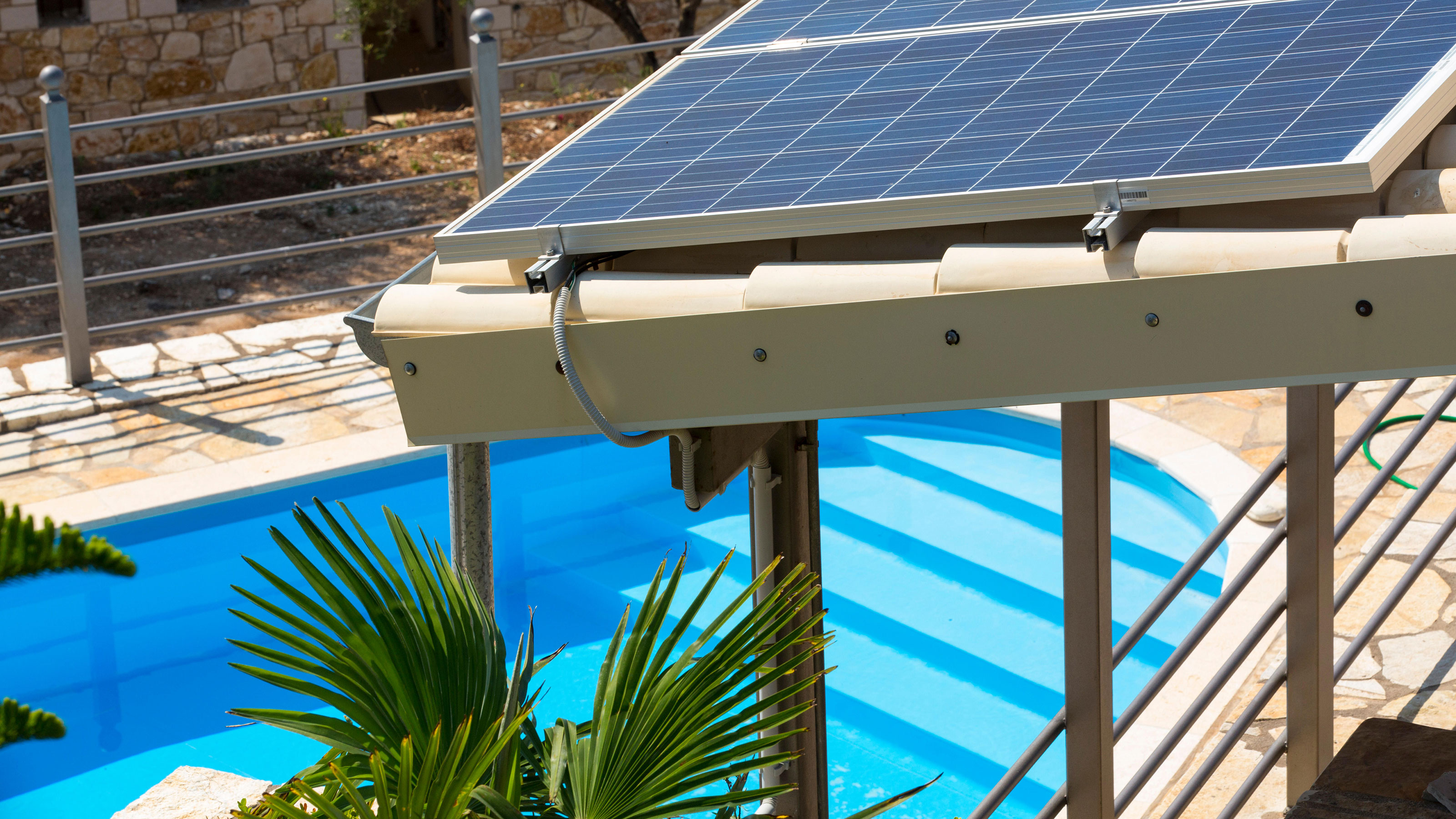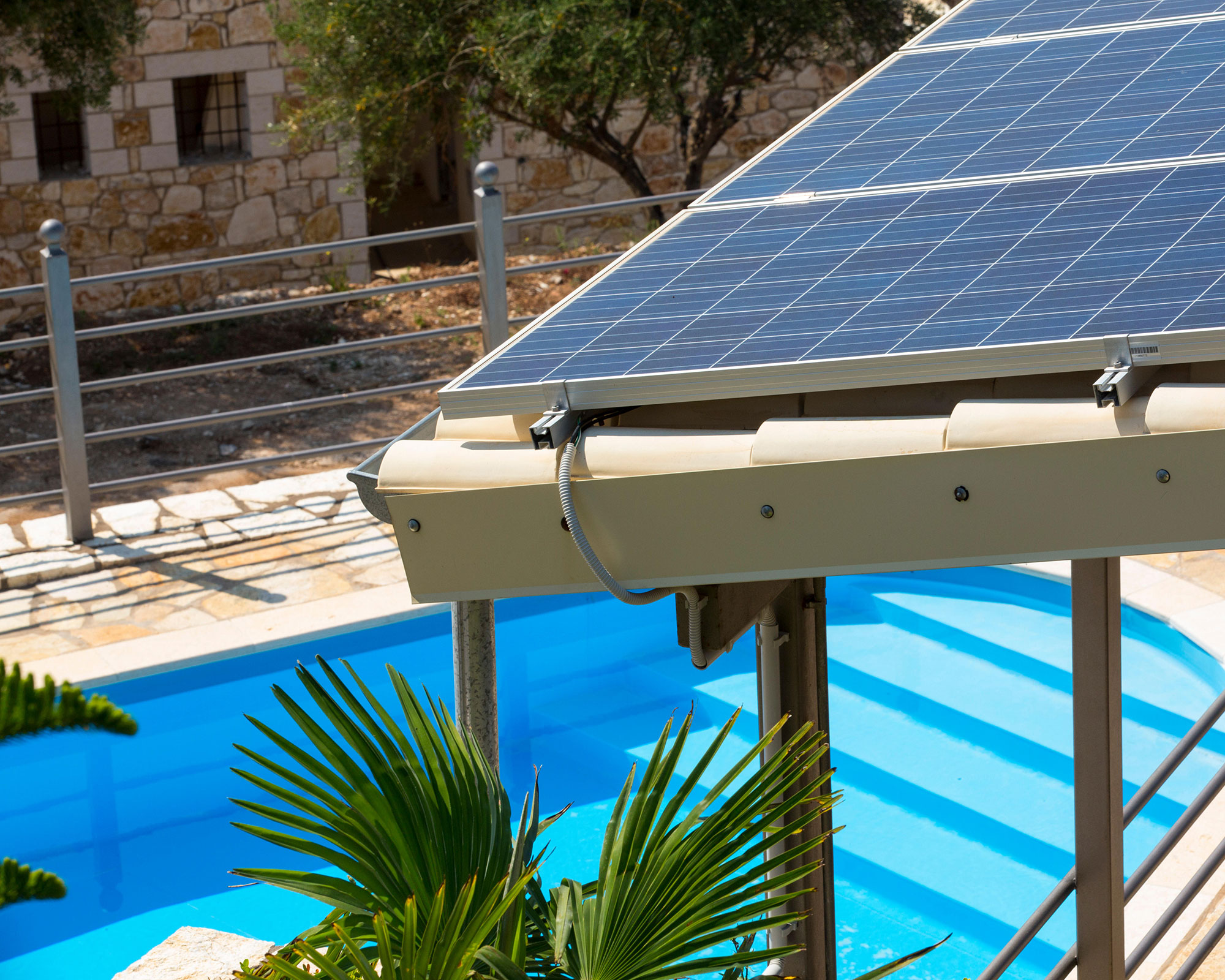How to heat a pool without a heater: budget-friendly ways to keep your swimming pool warm
Learn how to heat a pool without a heater and you can keep the water at a comfortable temperature while saving on costs


Wondering how to heat a pool without a heater? Yes – it can be done.
Chances are you'll want to know how to heat a pool if you have one of your own. After all, swimming in icy water isn't everyone's idea of a relaxing time. Sure, there are the classic methods – boilers and the like – but these can add up in both installation and running costs. So instead, why not learn how to heat a pool through more alternative means?
The key to heating a pool without traditional heaters is sunlight. So, if your pool is situated in a shady spot, it's probably best to stick to a more reliable approach. But, if you've got plenty of sun in your outdoor space, then it may well be worth incorporating these tips into your pool ideas.
Learn how to heat a pool without a heater with these 5 tips
Whether you need to heat an above-ground pool or an in-ground one, these simple and affordable methods are well worth a try.
1. Cover your pool with a solar blanket
First up is a solar blanket. This is an affordable, floating cover that you can pop over your pool when it's not in use. It helps to insulate the pool – keeping warmth in – and it can do a pretty good job at it too.
In fact, the experts at SPATA (The Swimming Pool and Allied Trade Association) recommend the use of a heat retention cover to be used with whatever heat source you choose, 'as most of the heat loss from a swimming pool is from surface evaporation.' This will help to minimize running costs if you're also looking to use a more traditional heater alongside.
However, it can be a safety risk, especially to small children: standing on the top of the cover by accident can be a hazard as it can wrap around the person, leaving them trapped. If you're looking for a family-friendly solution, this is therefore one to probably avoid. Or, if you still want to try it, at least ensure that you have a secure pool fence installed.

2. Invest in solar panels
You can also try solar panels, either by themselves or in combination with a supplementary, traditional heat source.
'The panels are operated by a separate controller that measures the temperature of the pool and the temperature of the air,' explains SPATA. 'This controller will normally ensure that pool water only flows through the panels when solar heat gains are available.
'Standard pool solar collectors require a bank of panels that are normally over 50% of the surface area of the pool, depending on the location,' the team continues. 'Ideally, the bank should be optimized according to manufacturer's instructions and are angled towards the sun.
'It is possible that the distance between the filter pump and the panels may require a booster pump,' they add. This may have to be taken into consideration when planning and siting such a system as part of your pool design ideas.

3. Try solar rings
Solar rings are similar to a solar blanket, except they are smaller and in the shape of a circle (or in the case below, a square). You can use as many as you need to cover the surface area of your pool. They are often fitted with magnets so that they attach to one another (but not strongly enough to prevent pushing them apart if someone accidentally falls in the water, so they're good if you're looking for solutions suitable for a family garden).
They help to retain warmth in the pool while absorbing heat from the sun, are easy to use, and are simple to clean. What's more, the gaps around each ring allow direct sunlight to reach the water, reducing algae build-up. Plus, most can be used alongside an automatic pool cleaner.

4. Or, a solar pill
Solar pills are another option. To use, you simply add one to your skimmer. As the water circulates, the liquid will disperse through your pool, coating the surface in a non-toxic, heat-retaining, invisible film.
They're not as effective at retaining heat as a solar blanket, but they spare you the hassle of rolling up and removing one whenever you fancy a swim. You will need to keep replacing them, however – the effects of one will only last a month or so.

5. Build an enclosure
Okay, so this one is a little on the pricer side, but it can be a great addition to your pool patio for lots of reasons.
Naturally, it will shelter the space from wind, reducing heat (and water) evaporation, therefore helping the pool to retain heat. But it can also allow you to use your pool whatever the weather. Plus, it can help keep out debris and insects, making pool maintenance easier.

Do you need a heater to keep your pool warm?
Although these methods on how to heat a pool without a heater can be useful and indeed effective, the final results do depend on other factors, such as where you are in the world. For colder regions, you will probably want to stick to a more reliable heating source (although you could always use the tips above alongside, to keep running costs down).
There are a few options if you're wondering how to heat a pool via more traditional methods. Heat pumps are an increasingly popular choice. As SPATA explains, they 'extract most of the heat they provide from outside air (or the ground).' They are straightforward to install and economical. Gas or oil boilers are another option and are usually installed within a plant room. Or, you can use electric resistance heaters, which are cheap to install but expensive to run.
Don't forget, once the swimming season has come to a close, you'll need to prepare it properly for the colder months. Our guide on how to winterize a pool will come in handy if you need some advice.

The garden was always a big part of Holly's life growing up, as was the surrounding New Forest where she lived. Her appreciation for the great outdoors has only grown since then. She's been an allotment keeper, a professional gardener, and a botanical illustrator – plants are her passion.
